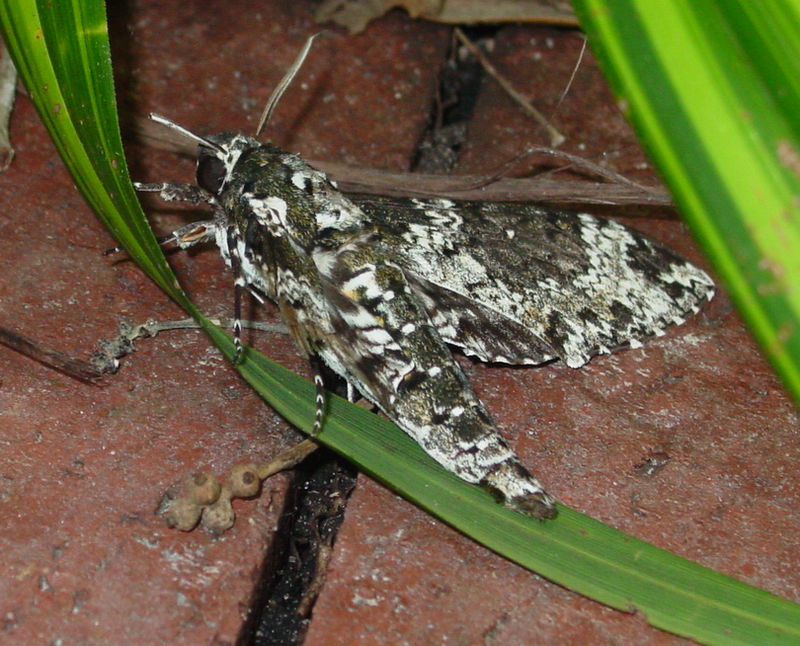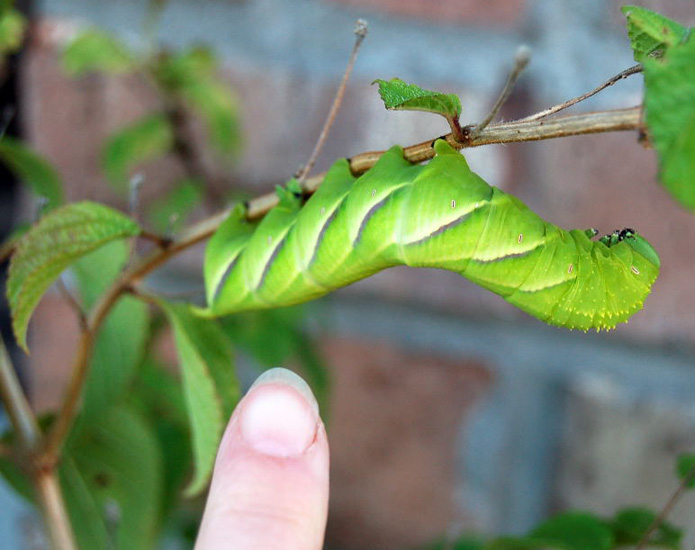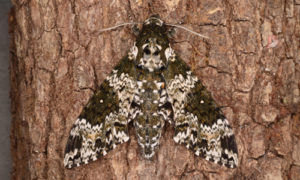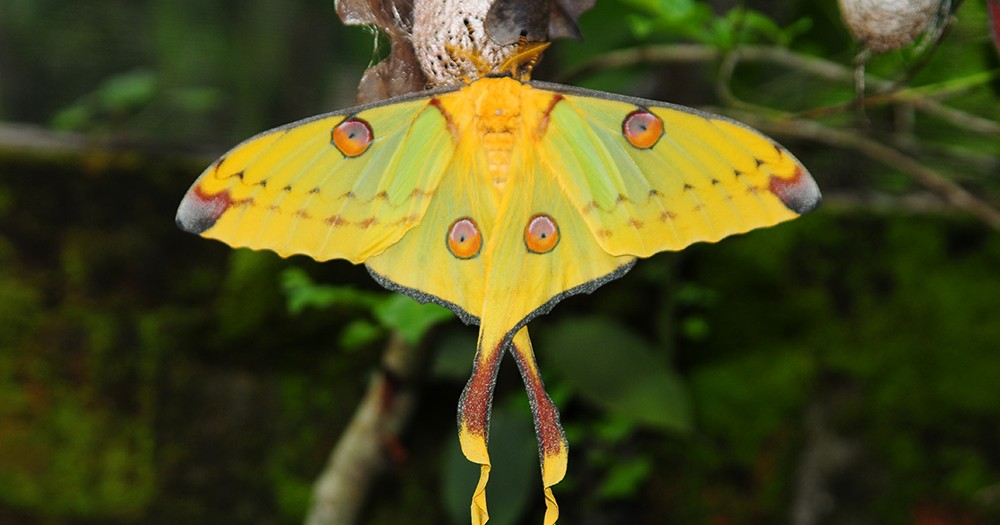Rustic Sphinx Moth (Manduca rustica)
The Rustic Sphinx Moth of the Sphingidae family was described in 1775 by John Christian Fabricius. It is one of the largest moth species, capable of filling out a human hand when held. They are often mistaken for hummingbirds due to their size and the beating of their wings.
It has five subspecies like Manduca rustica cortesi inhabiting Mexico and Manduca rustica cubana found in Jamaica and Cuba.
Scientific Classification
- Family: Sphingidae
- Genus: Manduca
- Scientific Name: Manduca rustica
Description and Identification
Caterpillar
The caterpillar has a bright green body, with yellow diagonal stripes bordered in purple-black or green. Its posterior end has a horn with granulations. The color remains the same throughout all the instars, but for the last one, when it turns reddish-brown, perhaps for camouflaging with the soil where the pupal phase begins.
Pupa
The larva tunnels into the soil and forms a pupation chamber. These chambers have a convex, arched top and a flat bottom, 2-3 cm larger than the pupa.
Adult Moth
Sexual Dimorphism: Not prominent
Color and Appearance:
Forewing: When opened, the color seen ranges from yellowish to dark brown and is dusted with white scales and black and white zigzagged lines. When closed, they form an isosceles triangle and cover three yellow spots on the abdomen.
Hindwing: When opened, the hindwing shows a similar coloration to the forewing. When closed, it is entirely hidden by the forewing.
The body is fuzzy with a combination of black and white, a color combination that allows it to hide from predators. They have a brown abdomen, while the abdominal segments are distinguished black lines marked in white. The yellowish-orange shade in the upper abdomen becomes prominent mostly when the moth is in flight.
Average Wingspan: 8.9 to 15 cm
Flight Pattern: Consistent
Mostly from May to October in Louisiana; July to November for others
Season: Late Summer to Early Winter
Egg
One to five eggs are laid at the underside of the host plants’ leaves. A female Rustic Sphinx Moth can lay up to 2000 eggs per clutch.
Quick Facts
| Distribution | Virginia, southern Florida, west Arkansas, Texas, southern New Mexico, Arizona, and southern California in the United States, Central America, Uruguay |
| Habitat | Warm tropical, subtropical and temperate forests |
| Predators | Cotesia congregate, and other parasitic wasps |
| Lifespan of Adults | 10-30 days |
| Host Plants | Fringe tree and jasmine in the olive family, bushy matgrass in the vervain family, knockaway in the borage family, and Bignonia species. |
| Adult Diet | Mostly nectar |
Scientific Classification
- Family: Sphingidae
- Genus: Manduca
- Scientific Name: Manduca rustica





